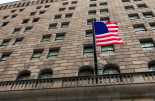DWS: FOMC meeting, a hawkish downshift
DWS: FOMC meeting, a hawkish downshift

Christian Scherrmann, U.S. Economist at DWS, comments on the December FOMC meeting.
'As universally expected, the Fed increased policy rates by 50 basis points, stepping back from jumbo-sized 75 basis points rises at a time when inflation is showing the first signs of cooling. But that was most likely not the main motivation for the central bankers’ shift. The time lag with which monetary policy impacts the economy was most likely the main reason for doing less in the last meeting of 2022. Usually rate hikes are thought to need up to four quarters to fully show their effect on the economy. Therefore, today’s interest rate hike is aiming to exert influence at the end of 2023 – by which time inflation is expected to be on or near to a sustained path towards the central bank’s target of 2 percent.
This hawkish downshift is also reflected in the updated Summary of Economic Projections. FOMC members indicate their willingness to raise rates even higher in 2023 than already indicated in the September meeting, to 5.1 percent from 4.6 percent, and are seemingly now willing to pay a higher price to tame inflation. Growth in 2023 was downgraded to 0.5 percent (Q4/Q4) from 1.2 percent in the Fed’s September projections. This does not necessarily imply a recession but, depending on the path the economy takes, recession could be on the cards given that such low growth is forecast.
Even then, central bankers retain their faith in the resilience of the labor market as a relatively small rise in the forecast unemployment rate for 2023 suggests – to 4.6 percent from 4.4 percent. Normalization of monetary policy is only indicated by 2024 and beyond. But it is expected to happen very gradually as FOMC members intend to cut rates to 4.1 percent in 2024 and to 3.1 percent in 2025 – by which time inflation is finally expected to converge towards the Fed target.
In the press conference Fed Chair Powell reiterated that labor markets are very tight, as is our view, and that the supply and demand for labor is unbalanced and repeated the mantra that rates are set to be higher for longer. His comments suggest that the Fed is not yet convinced that inflation is on a sustained downward path. Overall, and contrary to the hopes of many observers, Jay Powell did not open up room for any dovishness and seems to value the painful lessons the Fed learned during the 1970s and 1980s. Small wonder the markets’ initial reaction is one of disappointment.'







